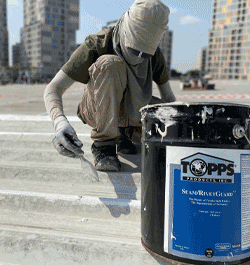UP TO THE MINUTE
8 OSHA Changes and How They Affect You

By Cass Jacoby, RCS Reporter.
A look at eight recent and anticipated changes and their impact on the construction industry.
Changes at OSHA under the Biden administration, new construction technology on the rise and the impacts of COVID are sending ripple effects through the industry. Here is a look at new and anticipated changes to adapt your workplace to.
1 – New OSHA appointees to come out of the Biden administration
Biden appointed Jim Frederick to lead OSHA as the Principal Deputy Assistant Secretary of Labor for Occupational Safety and Health. Adding to the OSHA leadership team, Joseph Hughes, Jr. is appointed deputy assistant secretary for pandemic and emergency response and Ann Rosenthal is named senior advisor. In March, Boston Mayor Marty Walsh was confirmed to a Biden cabinet position as the Labor Secretary.
We have already seen an updated enforcement of COVID guidelines, the new appointees' priorities are first and foremost addressing COVID and keeping workers safe.
2 – Uncertainty over Emergency Temporary Standard (ETS)
Some states have established a COVID-19 workplace standard, but the construction industry as a whole has been waiting for a standard protocol. June 21 of 2021 the new ETS went into effect. While the ETS is largely healthcare-focused, OSHA issued updated guidance to help employers and workers in other industries protect employees who are still not vaccinated, and will require employers to have a plan to mitigate virus spread.
3 – Infrastructure investment
Biden has proposed a $2 trillion infrastructure bill. According to NPR, the bill delegates billions to fix highways, rebuild bridges and roads and upgrade road safety, ports, airports and transit systems. Additionally, the plan calls for building, preserving and retrofitting more than two million affordable homes and commercial buildings, as well as modernizing schools and childcare facilities, and upgrading veterans’ hospitals and federal buildings.
4 – Commitment to workers
Both Fredrick and Walsh will bring a pro-labor union perspective on legislation and regulation. Furthermore, Walsh, a former construction worker, has stated his commitment to ensuring workers feel safe on the job. He also calls for rebuilding the middle class through union membership and increasing job opportunities for women.
5 – Jobsite compliance/enforcement
With the new administrations recentering on enforcing the existing standards and guidelines, OSHA will be increasing their enforcement efforts. More inspectors on jobsites will drive general contractors (GC) to closely examine how they enforce compliance and avoid formal complaints.
6 – Vaccine hesitancy
The pandemic is not over, despite the number of vaccinations happening through the country. A recent survey reports that only 53% of construction workers are likely to get a vaccine, which is particularly worrisome given the arrival of the delta variant of COVID.
7 – Ongoing skills shortage
According to the Associated Builders and Contractors (ABC), construction companies will need to hire at least 430,000 more workers this year, with the potential for that number to get as high as one million. Meanwhile, employee retention remains an issue, with ADP reporting a 21.4% turnover rate in the construction industry. Retention becomes an even higher priority for GCs that took PPP loans and want the Employee Retention Credit (ERC) on their taxes.
8 – Supply chain challenges continue
Costs will continue to rise for materials subject to shortages from COVID-19, on top of shipping delays. Expect to see continued delays in the delivery of construction materials and high prices.
Stay up to date with the latest roofing industry news when you sign up for the RCS Week in Roofing e-news.





















Comments
Leave a Reply
Have an account? Login to leave a comment!
Sign In